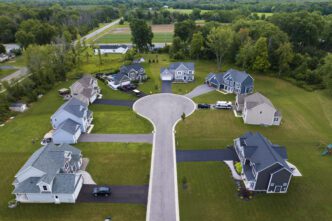In October, the housing market faced a significant setback as new home sales fell sharply by 17.3%, reaching a seasonally adjusted annual rate of 610,000 units. This downturn, reported by the U.S. Department of Housing and Urban Development alongside the U.S. Census Bureau, highlights the pressing challenges posed by heightened mortgage rates and ongoing affordability issues, which kept potential buyers at bay.
The decline in new home sales underscores the financial pressures confronting prospective buyers, who are finding it increasingly difficult to manage tighter budgets and elevated borrowing costs. Carl Harris, Chairman of the National Association of Home Builders (NAHB), remarked, “The decline in new home sales highlights the pressures on prospective buyers who are navigating tighter budgets and higher borrowing costs…” This sentiment reflects a broader slowdown in buyer activity amidst widespread economic uncertainty.
Further compounding the issue, rising mortgage rates increased by 60 basis points in October, according to Freddie Mac. These rates, coupled with elevated home prices, exacerbate affordability challenges. Danushka Nanayakkara-Skillington from NAHB disclosed that despite these obstacles, including surging material costs for builders, new construction remains critical, particularly in regions facing low existing home inventory.
A new home sale is initiated when a sales contract is signed or a deposit is accepted, irrespective of the construction stage. The seasonally adjusted rate of 610,000 units signifies the number of homes that would sell if this pace was maintained over the next year. In October, inventory for newly constructed single-family homes stood at 481,000, marking an 8.8% increase from the previous year, equating to a 9.5 months’ supply at the current construction rate. Notably, completed and ready-to-occupy homes have risen by 52.6% to 116,000 units compared to the prior year, yet still comprise only 24% of total inventory.
The median sale price of new homes saw a modest growth of 2.5%, bringing it to $437,300, which is a 4.7% increase year-over-year. Regionally, the landscape is varied; the Northeast experienced a 35.3% rise in new home sales, and the Midwest saw an increase of 15.9%. Conversely, the South and West regions encountered declines of 19.7% and 1.3%, respectively.
The housing market in October reflects the complex interplay of factors such as rising mortgage rates, material costs, and regional disparities in home sales. While challenges persist, especially in affordability, the need for new construction remains significant in certain areas with limited existing inventory. These dynamics indicate an evolving housing landscape that demands careful observation in the coming months.
Source: FloridaRealtors








